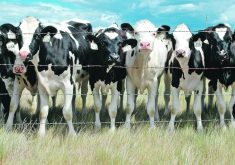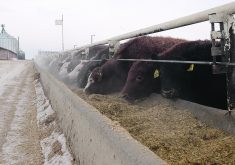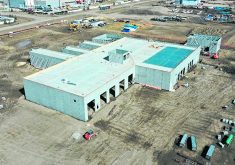Children joined their parents for guided tours, allowing them to pet calves and touch a beeping automatic feed pusher
Would you think inviting hundreds of strangers to your home for breakfast to see how you go about doing things is a good idea?
Dairy farmer Don Chalack thinks it’s not just a good idea. It’s a great one.
“Our target is to have people that aren’t either from a farm or familiar with farming or dairy farming, just for them to come and see, enjoy some breakfast and have a tour.”
His 1,000-acre Wendon Holsteins farm east of Bowden, Alta., recently hosted one of several free events organized this year by Alberta Milk.
“It moves from farm to farm in this region every year, and so we were asked to be the host this year and it’s been great,” said Chalack, as he stood near a line of people waiting to get into a tent where pancakes were served.
About 1,000 people attended the one-day event, which was held June 24 from 8 a.m. to noon. Children joined their parents for guided tours of the farm, allowing them to pet the calves and touch a beeping Lely Juno automatic feed pusher as the robot slowly nudged silage along the floor toward the cows.
Producers face increasing public pressure over issues ranging from how animals are used in agriculture to the impact of farms on the environment, said Gert Schrijver, who is a board member for both Alberta Milk and Dairy Farmers of Canada.
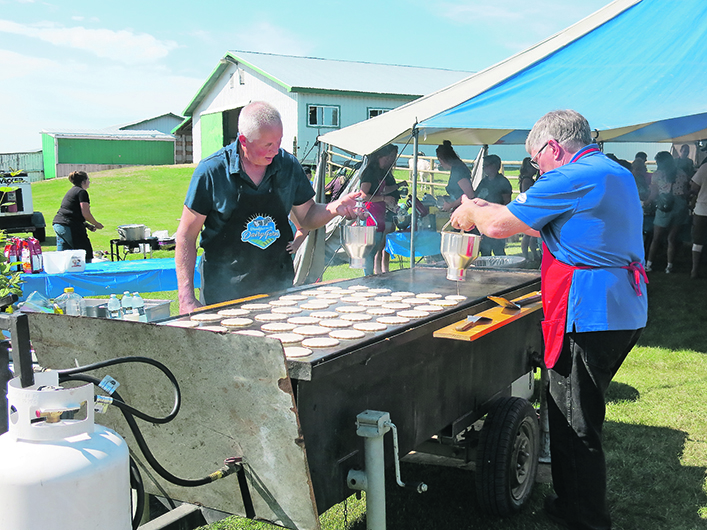
“I think there is a perception mainly through social media about animal agriculture in general that’s not real, and when the consumer comes to the farm and you explain it to them in a tour, and you explain what we all do to improve animal care and the environment, they leave the farm with a completely different perspective than when they come in.”
Producers need to reach out to the public to foster a better understanding of where their food comes from, he said.
“The consumer used to be closer to the farm; now it’s three generations away,” said Schrijver as he helped guide visitors.
“There are less people living in rural areas and there’s only one percent of the people that live in Alberta who are farmers these days… so they have less of an understanding of agriculture in general, so these Breakfast on the Dairy Farm events are extremely helpful to advocate (for our industry).”
Richard Torres of Olds, Alta., was among the visitors.
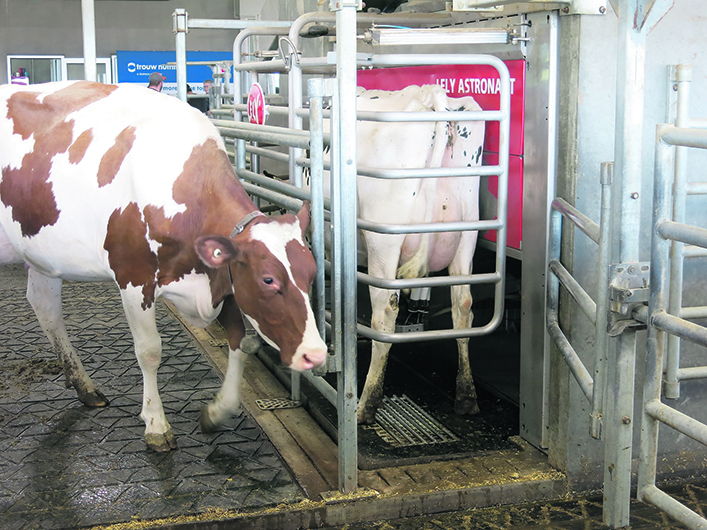
“We want to see how the milking process goes on and we want the kids to experience how their milk comes to our table,” he said as he held his two-year-old daughter, Audrey, near the cows.
As someone with no agricultural experience, he expected the farm work to be done manually. Visitors instead watched as cows lined up for their turn at the stationary Lely Astronaut milking robot, which is located inside a pen that lets them in when they choose to be milked, said Chalack.
“The cows are in a great facility. They have all the room to move and eat at their leisure 24 hours a day. In the robotic milking, they can get milked three, four times a day, so yeah, the environment and management are huge.”
The cows have transponders around their necks that identify them when they go into the robot, which gives them feed as a reward, said Chalack.
“And a cow can only be milked a certain number of times a day, otherwise some cows, they would love to go in there and get a little bit of feed more often.”
The system records data for each animal in his 70-cow herd, he said.

“Every time they’re in there being milked, it takes their temperature, it takes their rumination, it takes their somatic cell count, which is any sign of a possible infection starting. Yeah, it’s got a lot of data.”
Innovative technology is also evident in the breeding side of the farm. Chalak’s operation has earned many awards, including being named a master breeder three times by Holstein Canada.
“We do a lot of showing of our cattle all over North America, and that’s my real passion.”
Chalack said there are about 480 dairy farms in Alberta, down from about 2,900 when he started his farm in 1976. Operations have not only grown larger, but they are also producing much more milk than they did nearly 50 years ago, he said.
Improvements in automation, genetics and feed have resulted in dairy farms increasing their milk production by about 50 percent in the past few decades, said Schrijver.
This gain in efficiency has also resulted in a reduction in the industry’s carbon footprint, joining practices such as using manure from dairy cows to fertilize land used to grow silage for the cows, he said.
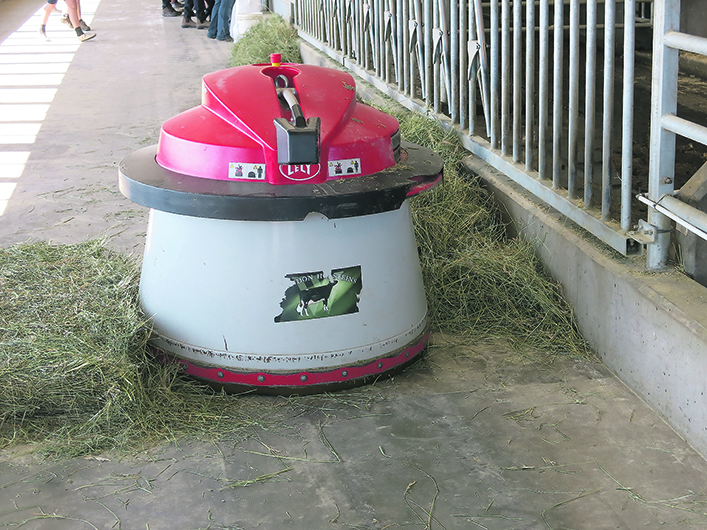
“It’s basically a lifecycle assessment, but the cows produce the manure, we bring it back to the land and that’s how we explain it to the consumer, so it’s really a success story from a sustainability and environment perspective.”
However, despite adopting high-tech solutions such as automation and data collection, Chalack is one of those farmers who still names all his cows.
“In fact, if someone tells me a number of one of the cows in the robot, I don’t know it, but if they tell me the name, I know.”
Taking good care of their cows and the environment is of vital importance to dairy farmers, said Schrijver.
“For us, it’s more than money, it’s our life.”





